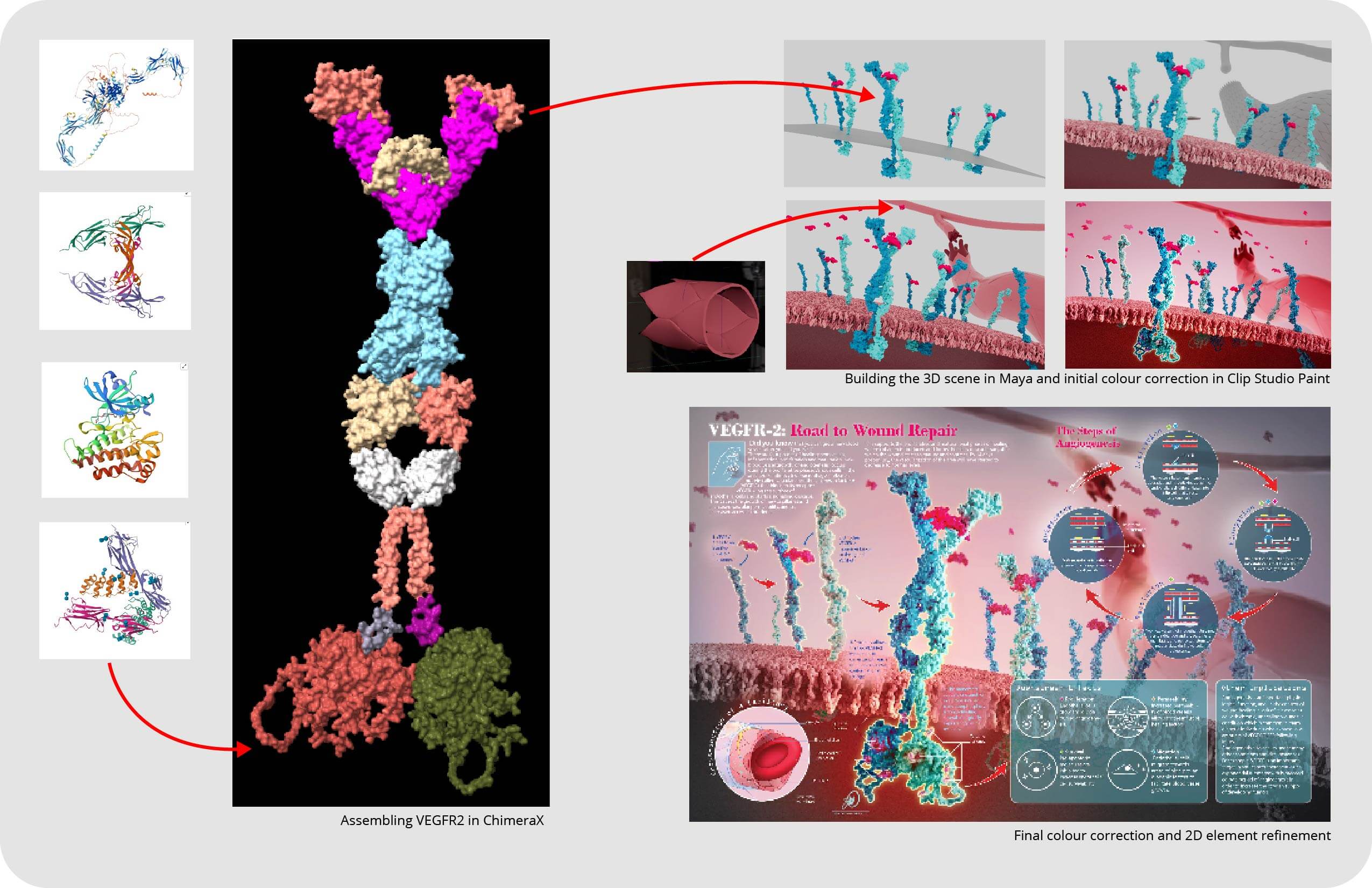Project Description
The goal of this assignment was to create an infographic featuring Vascular Endothelial Growth Factor Receptor-2 (VEGFR-2), a molecule that is involved in many physiological and pathological pathways. I focused on its role in angiogenesis, which is the growth of new blood vessels. While VEGFR-2 is very large for a protein, it is still tiny compared to structures on a cellular level. As a result, a challenge of this piece was tying in the molecular components with their role in causing cell-level changes. Scroll down to see the full infographic!
Client
Derek Ng (Biomedical Communications
Professor, University of Toronto)
Audience
Educated Lay Audience
Tools
ChimeraX, VMD, Maya, Adobe Illustrator, Clip Studio Paint

Drafting and Research
This project began with finding a molecular main character. I chose VEGFR-2 because I found angiogenesis to be a fascinating topic. Once I had decided on my molecule, I researched the different molecular mechanisms of VEGFR-2 and found the Alphafold and PDB files for it using UniProt and the RCSB PDB database. Then, I drafted my thumbnails, wrote the script, and made my initial layout.

Rendering
After gathering my references, I pulled my PDB and Alphafold files into ChimeraX to assemble VEGFR-2's full structure. Because VEGFR-2 is a huge protein (230 kD), no one had imaged its entire structure, and only a few of its domains were available online as PDB files.
As a result, I combined several PDB files of its available subdomains with cut-out sections of its unimaged domains from its Alphafold file.
To combine these different segments as accurately as possible, I referenced simplified diagrams of its full structure from published articles
and compared it to two evolutionarily related receptors, VEGFR-1 and VEGFR-3.
Once this was done,
I exported the structure into VMD so I could create a OBJ file to import it into Maya. In Maya, I used MASH networks extensively on
several 3D elements. To position copies of the molecule on a plane, I first picked where I wanted the molecules to be using a selection set. Then,
I pulled the selection set into MASH to create the VEGFR-2 duplicates. The plane was also used as the base for the phospholipid bilayer. I imported
the molecules for the bilayer using the same ChimeraX-VMD-Maya pipeline. The bilayer was then created using MASH. Lastly, because
the focus of my project was on the role of VEGFR-2 in angiogenesis, I created a growing capillary to extend into the background. The vessel was created using MASH
and set along a bezier curve.
Once I finished modelling and lighting the scene, I rendered and exported the scene in layers for more efficient compositing. Then, I made final refinements
to the 2D overlay elements and text and colour-corrected the exported image.

Final Render


